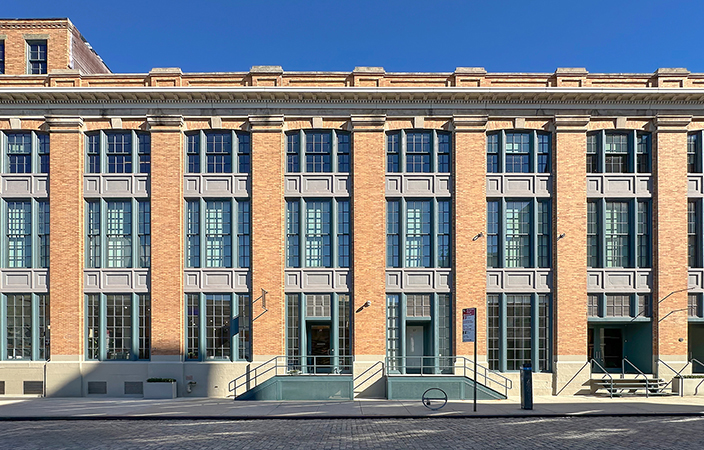News:
Brokerage
Posted: January 3, 2008
Smooth ride on the "green" train: Construction contract issues unique to green building
The significant increase in demand for green buildings has you ready to get on the "green" train. You know that green buildings are resource efficient structures which incorporate environmentally friendly and resource conscious materials and practices in their design, construction, operation and maintenance. But are you aware that your standard construction contracts may not be sufficient for a green building project? Just as green building projects involve unique materials, designs and concepts, construction contracts for those projects involve issues not common to traditional construction projects. Issues of compliance, scheduling, certification and risk management can derail a green building project or even stall it in its tracks. Appropriately written and negotiated construction contracts are the key to a smooth ride on the "green" train. Here are some points to consider:
* Management of certification procedures. Consider whether the structure will be certified under U.S. Green Building Council's Leadership in Energy and Environmental Design (LEED) rating system or under the Green Globes certification process developed by the Green Building Initiative (GBI). A comprehensive look at the nuances of these building rating systems is available through the University of Minnesota's website at http://fpmdi.cfans.umn.edu/Projects/greenbuildingratings/GG_LEED_10_06.pdf. In any event, these certification methods set forth specific steps for certification and require principals to keep track of project progress. If the parties decide certification is appropriate, responsibility for all aspects of this process should be thoughtfully considered and explicitly delegated within the contract documents.
* Enhanced building standards - scope of work. A property owner's motivations and priorities in any green design project are often varied and complex, particularly in light of the various tax benefits and other economic incentives uniquely available in connection with such structures. The building standards and scope of work for the design and construction teams should be set forth with specificity, and the agreements should adequately reflect the responsibility and liability of each party in the event such standards are not met. Also, consider whether and which substitutions or replacements might be acceptable if certain components or materials become unavailable during the course of the project.
* Compliance with applicable laws. Similarly, there may be statutes, ordinances or regulations unique to the green project, such as special permitting requirements and tax or other economic incentives. For example, N.Y. developers and builders who construct environmentally friendly buildings meeting certain criteria may apply for a tax credit through the NYS Green Building Tax Credit program. Stakeholders in green structures should carefully consider any requirements in connection with such laws and regulations and appropriately and explicitly delegate responsibility for fulfilling any special conditions.
* Risk management. In a traditional construction project, risks are managed through a variety of methods, including contracts, warranties, insurance and, where applicable, performance and/or payment bonds. Sustainable building projects inject a unique element of risk into the construction process, as an owner will expect design professionals and building contractors to assume certain responsibilities for the design and components of the green structure, while the contractor and professional do not want to guaranty a product they may not be able to deliver. Some risks unique to sustainable building construction projects include a failure to obtain desired environmental certification and/or other tax or financial benefits, unexpected increases in costs without an increase in project value and/or a failure to meet a heightened standard of care. Consider the unique risks and potential shortcomings involved in such green design projects and ensure that the parties' risk insurance adequately considers and covers the unique green features of the project. Furthermore, ensure that any representations and warranties made in the course of negotiations are reduced to written form in a manner that achieves the desired balance of interest and responsibility.
Flexible scheduling and budgets. Because there are often unique, eco-friendly materials incorporated into a sustainable structure, the availability of certain products may be limited, delayed beyond the originally agreed-upon schedule and perhaps even become unavailable. Similarly, given the recently increasing demand for green components, the prices associated with such products may rise unexpectedly during the course of the project. If available and appropriate, consider implementing a more flexible timeline and/or budget in connection with the construction phase of the green project.
In any event, don't let the issues unique to green building contracts intimidate you out of getting on the "green" train; in additional to the environmental advantages of sustainable structures, these design and construction projects involve potentially huge monetary benefits for all parties involved. In entering into a sustainable building project, however, the parties should consider and address the unique issues and risks involved in such a venture to avoid facing costly dispute resolution or litigation during the course of their relationship.
Deborah O'Malley, Esq. is an associate at Gilberti Stinziano Heintz & Smith, P.C., Syracuse, N.Y.
Tags:
Brokerage
MORE FROM Brokerage
SABRE coordinates sale of six properties totaling 199,845 s/f
Huntington, NY SABRE Real Estate Advisors has completed the sale of six commercial properties across Long Island and Northern New Jersey, further underscoring the firm’s strength as a trusted partner in complex real estate transactions. The deals were led by executive vice presidents Jimmy Aug and Stu Fagen, whose combined expertise continues to drive exceptional results for clients across the region.

Columns and Thought Leadership

Lasting effects of eminent domain on commercial development - by Sebastian Jablonski
The state has the authority to seize all or part of privately owned commercial real estate for public use by the power of eminent domain. Although the state is constitutionally required to provide just compensation to the property owner, it frequently fails to account

Lower interest rates and more loan restructuring can help negate any negative trending of NOI on some CRE projects - by Michael Zysman
Lower interest rates and an increased number of loan restructurings will be well received by the commercial real estate industry. Over the past 12 months there has been a negative trend for NOI for many properties across the country.

Strategic pause - by Shallini Mehra and Chirag Doshi
Many investors are in a period of strategic pause as New York City’s mayoral race approaches. A major inflection point came with the Democratic primary victory of Zohran Mamdani, a staunch tenant advocate, with a progressive housing platform which supports rent freezes for rent

Behind the post: Why reels, stories, and shorts work for CRE (and how to use them) - by Kimberly Zar Bloorian
Let’s be real: if you’re still only posting photos of properties, you’re missing out. Reels, Stories, and Shorts are where attention lives, and in commercial real estate, attention is currency.







.jpg)
.gif)
.gif)